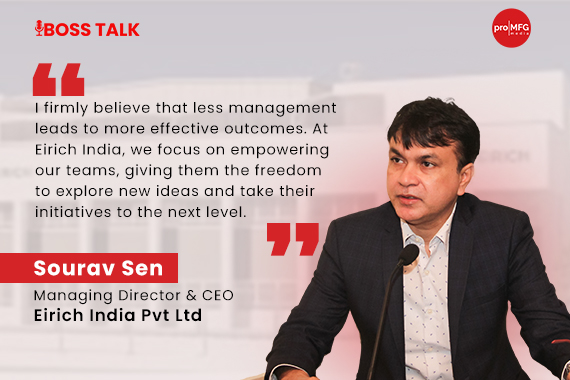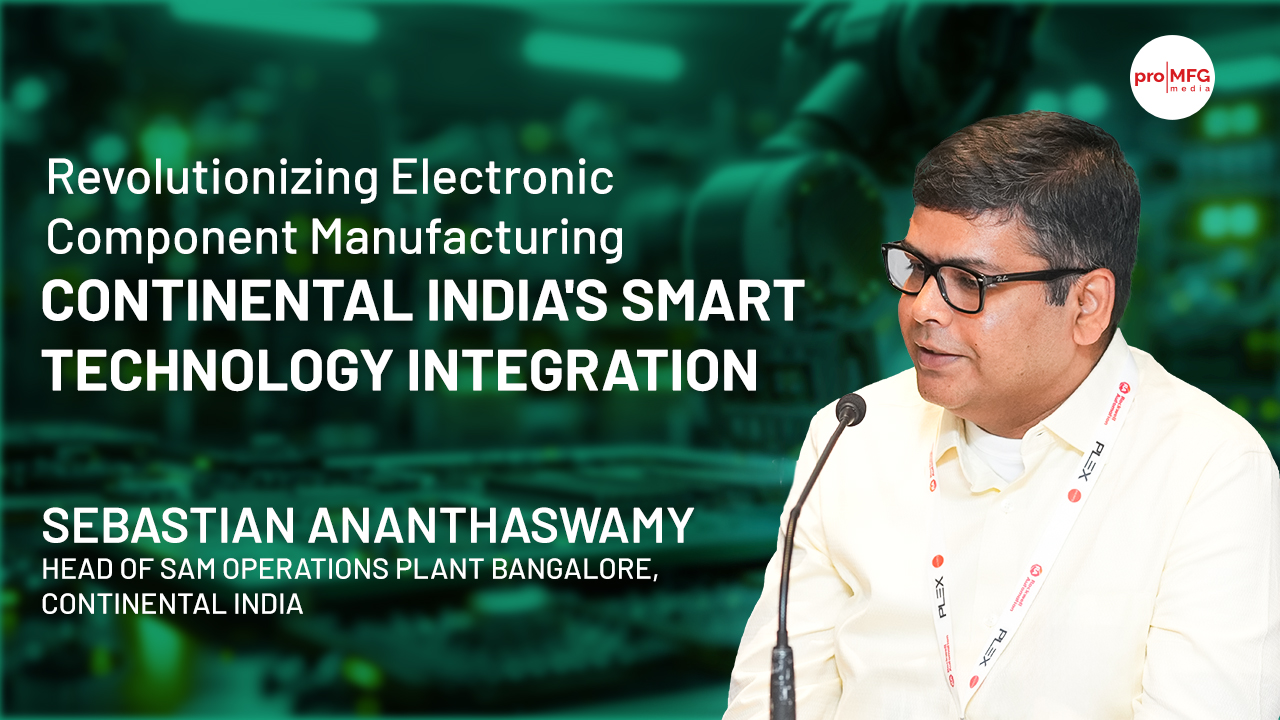Grasim Industries Embracing Culture Change, a Vital Part of Digital Transformation
#Digital #Leadership #AI #ChemicalsIn today’s world, customers expect the brands to provide a flawless digital experience in their interactions. Often, we witness the legacy brands losing the race, thus the companies born before the internet age should embrace the digital culture to survive in the market. Mr. R G Krishnan, Jt. President and Unit Head - Chemicals, Grasim Industries Limited, shares with Pro MFG media, their digital journey and how the organization embraced digitalization.
Digitalization is not a trend anymore but is the need of the hour. As they say ’change is the only constant’ and the ones who adapt it, are the ones who survive in the world. The manufacturing industries could not escape from digitalization, and in fact, it has proven immensely beneficial for the industry. Well, benefits are wrapped in the blanket of challenges, and in the process of digitalization, the organizations face numerous challenges. Piloting the balance between the culture and technology together is one of the toughest challenges of digital transformation.
The old guards holding senior positions in the organization mostly are technology challenged, and hence take much longer to learn the basics of digitalization. The tech-savvy young employees, due to their inexperience, are not aware about many aspects of the manufacturing industry. On the other end, the older employees are challenged when it comes to adopting new technologies. The Internet by its very characteristics has many things to offer besides just relevant information. Therefore, it is essential for the younger generation to keep their focus intact and keep themselves away from many distractions and irrelevant information. While digitalization can help improve and simplify various processes, the decision-making abilities may suffer because the team is not uniformly digital-savvy.
The efficient design architecture of digitalization is of utmost importance to eliminate some real-time challenges. The digital team may incorporate alerts for every performed task or pending task but, in between so many alerts, there are high chances of missing the alert that may matter the most, especially considering the safety aspect. Hence it is crucial to opt for an efficient digital architecture design in the system.
Apart from that, in the digital world, every improvisation becomes obsolete in a span of 12 to 18 months, which does not fit in the manufacturing mindset. The manufacturing organizations are used to long-serving equipment, and the sudden introduction of a system that will need an upgrade in every 12-18 months can leave them flabbergasted. In the interest of digitization, IoT, etc., the forced obsolescence creates a disconnect in critical areas like safety, hazardous chemicals, and energy management. The manufacturing organization must adopt a stepwise digital transformation, and so, should be also advised by the team leading digital transformation. Often, there is a generation and communication gap between the implementation team & execution team, which leads to the dilemma.
Grasim Industries is trying to bridge the gap between implementation and conceptualizing teams and the users who should actually be benefiting from this digital transformation. It is a top-management driven system because of the gap in knowledge or awareness at the user level. The organization has implemented digital transformation wisely and efficiently. On the unit team’s recommendation, the company decided to digitize the traffic monitoring system on its weighbridges. It has four weighbridges that encounter very heavy traffic and the management used to receive many complaints of mismanagement in this regard. In its factory, the Company installed four weighbridges in a one-way traffic system, and have integrated them digitally to interact with each other. Digitization of this whole process has led to an efficient turnaround of less than two hours one way. The organization is now able to control the traffic on weighbridges, which created immense problems and mishaps earlier. The whole weighbridge system is now unmanned, and digitally connected.
With the success of this system in this unit, all eight units of Grasim Industries have implemented the one-way unmanned and digitally integrated weighbridges. As a further addition to this, the company started to generate their billing by simply inserting the incoming & outgoing weight in the SAP system. Although such simple practices have been applied in various industries such as cement, the lack of implementation of cross-pollination ideas has left many organizations behind the curve.
In future, Grasim industries’ East Godavari unit is planning to implement AI and digital integration in gas detection, energy and water management.

NEWSLETTER
TRENDING ON PRO MFG
MORE FROM THE SECTION



.jpg)




